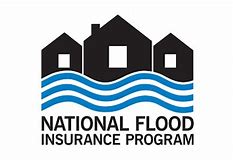Better pricing risk
 In a highly anticipated announcement, the National Flood Insurance Program (NFIP) has formally launched its Risk Rating 2.0, a modernized way of determining risk and rates. The program is expected to have its biggest impact here in Florida – home to about 35% of the NFIP’s 5,035,000 policies nationwide.
In a highly anticipated announcement, the National Flood Insurance Program (NFIP) has formally launched its Risk Rating 2.0, a modernized way of determining risk and rates. The program is expected to have its biggest impact here in Florida – home to about 35% of the NFIP’s 5,035,000 policies nationwide.
David Maurstad, the NFIP’s Chief Executive called Risk Rating 2.0 a “game-changing initiative for the NFIP” during a news media call last week. Rather than the current system, which often relies on decades-old flood maps where you are either “in” or “out” of a zone and pay a flat rate accordingly, the new method will be based instead on catastrophic modeling that can more specifically determine risk and price accordingly. Risk factors include such variables as elevation, slope, distance to the coast or rivers, surge, topography, and precipitation. It will also factor in the replacement cost of the home which could lead to higher rates for expensive homes and cheaper rates for lower-value homes.
Critics of the current program argue federal flood insurance encourages some homeowners to disregard risk, by providing subsidized premiums at a level far below what’s actuarially-required to cover the claims’ costs. It’s one of the big reasons the program is $20 billion in taxpayer debt. We discussed this on a recent Florida Insurance Roundup podcast with experts who pointed out specific areas where the program pays homeowners to rebuild their flooded homes in the same low-lying spots, over and over again.
How the Milliman-designed Risk Rating 2.0 will impact subsidies is unclear. Maurstad said the new rates will debut to policyholders next year on April 1 and would take effect in October 1, 2020. It’s widely expected that rates will increase significantly for coastal properties and for others on or near inland rivers and streams that are at the greatest risk of flooding. While around 3.5 million policies could be impacted, Maurstad said he hopes the new rates will attract residents currently without flood protection.
While the NFIP addresses solutions from a regulatory side, Congress is addressing them on the legislative side. The House of Representatives Financial Services Committee recently met to discuss reauthorizing the program by May 31 when its current short-term extension expires. They also discussed proposals that would re-work subsidies, provide greater funding for mapping, floodplain management and mitigation, and determine how to phase-in rate increases under Risk Rating 2.0 A new federal rule requiring lenders accept private flood insurance for mortgages requiring insurance was lauded for its expected benefit in relieving some of the burden on the NFIP.
I was honored to take part in the recent National Conference of Insurance Legislators (NCOIL) meeting with David Maurstad, where we discussed a draft of a model private flood insurance law to improve consumer choice in all 50 states, as we’ve done here in Florida. In a follow-up afterward, Professor Howard Kunreuther of the Wharton Risk Center pointed out that there are important roles the NFIP must still play. These include making sure communities enforce relevant building codes and land use regulations as well as dealing with affordability issues and catastrophic coverage. These points are highlighted in his paper Improving the National Flood Insurance Program. It’s the first report I’ve read with a practical strategy for getting folks off the couch and purchasing needed flood insurance protection and mitigation.
And lest we need a reminder of the urgency, National Weather Service forecasters this past week warned that historic flooding could soon deluge most of the Midwest and the South this spring.
LMA Newsletter of 3-25-19

